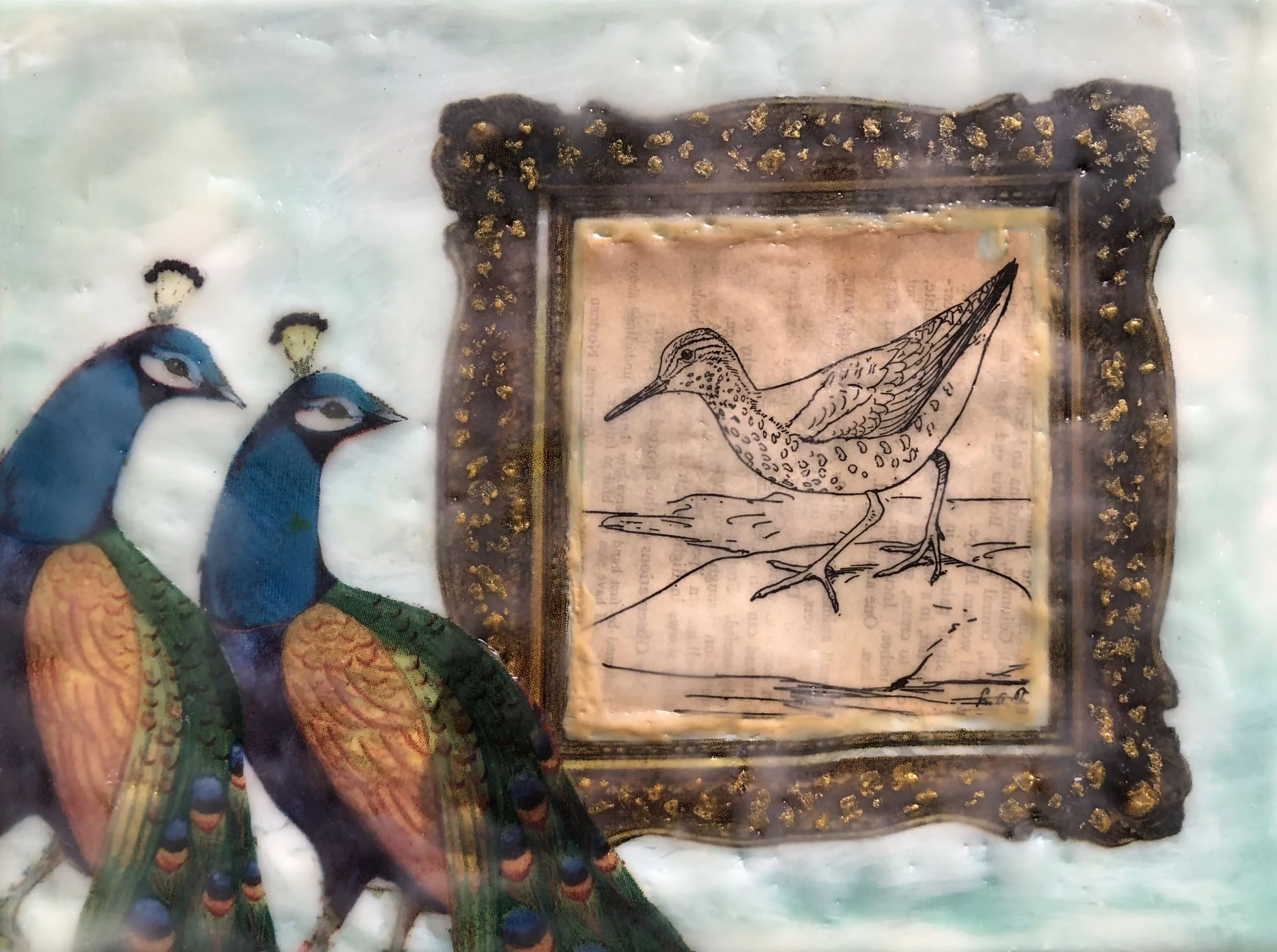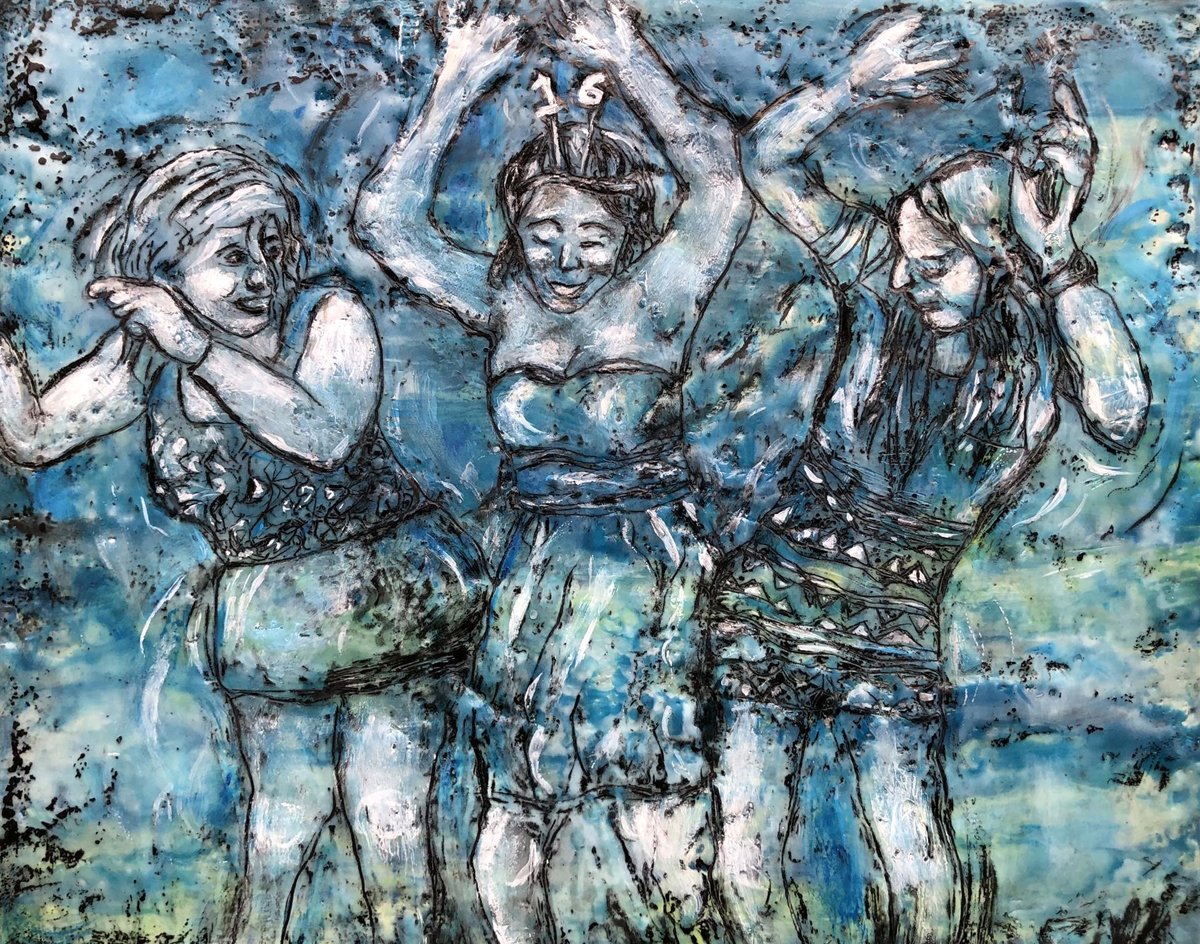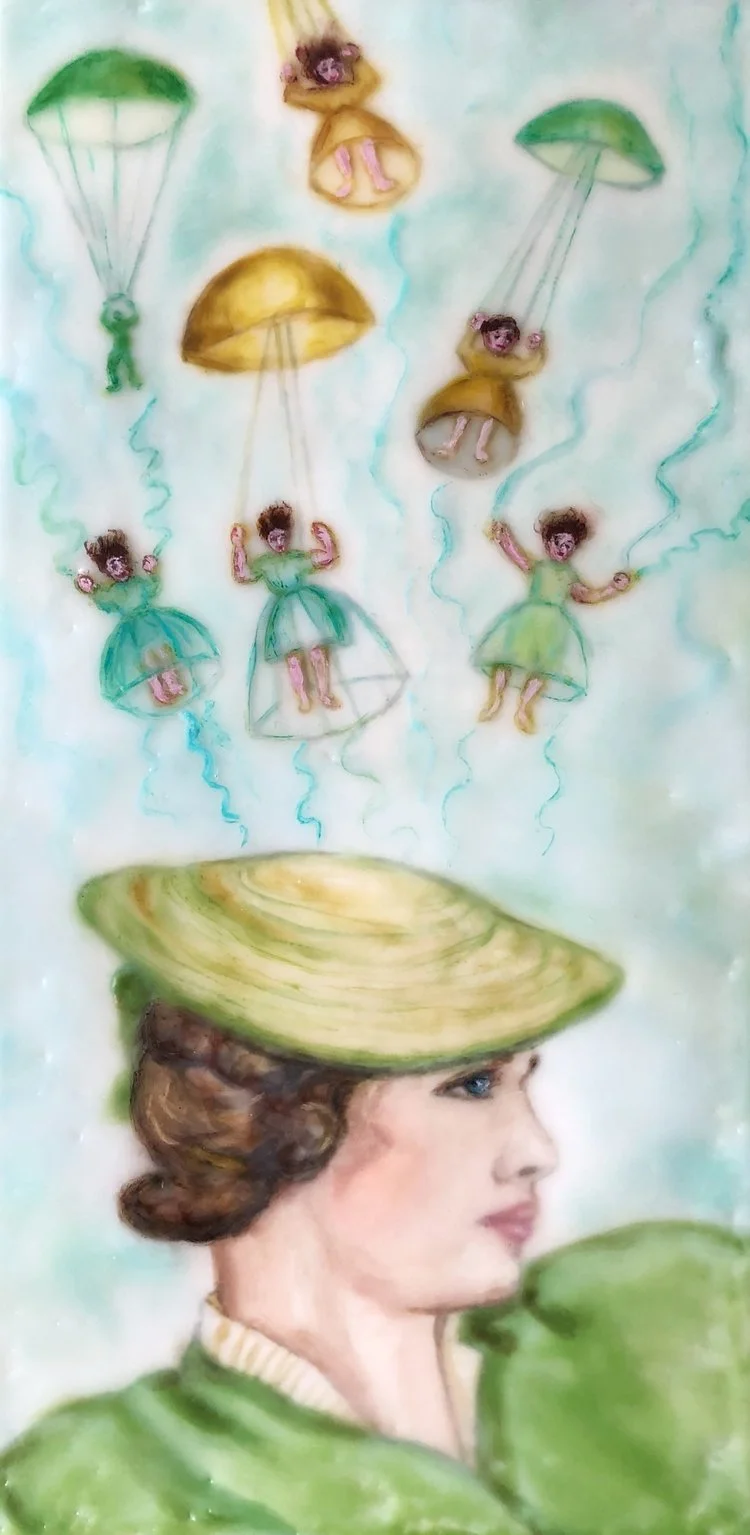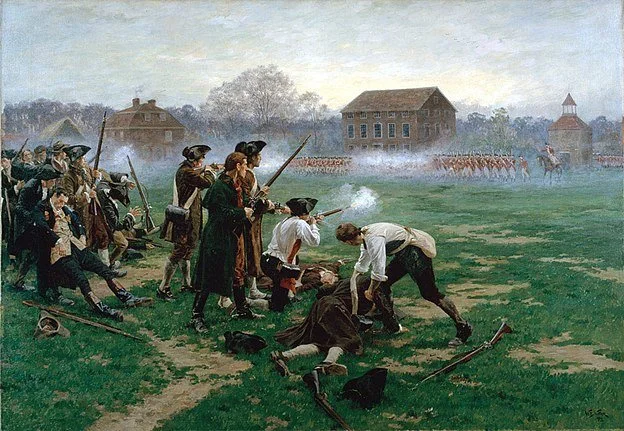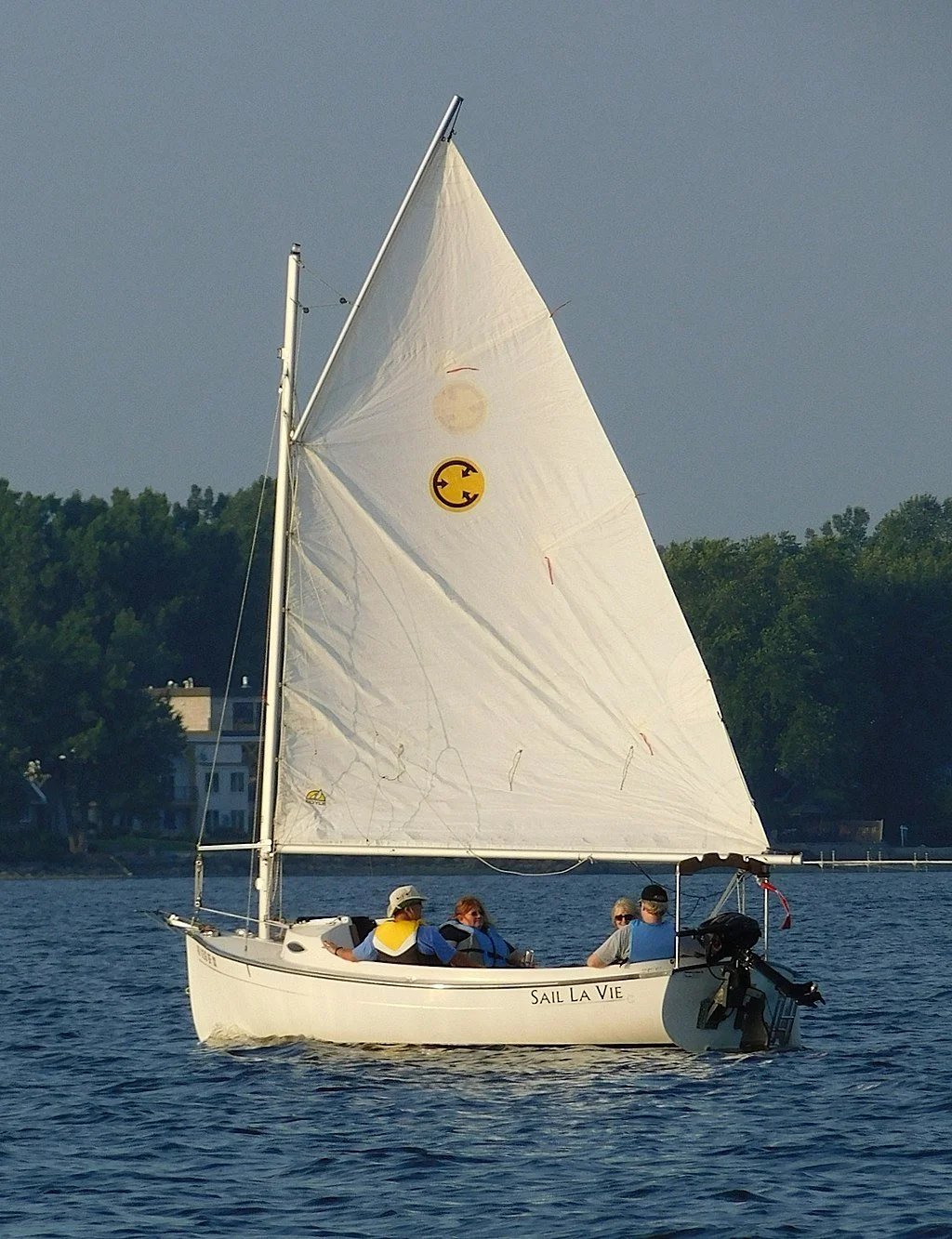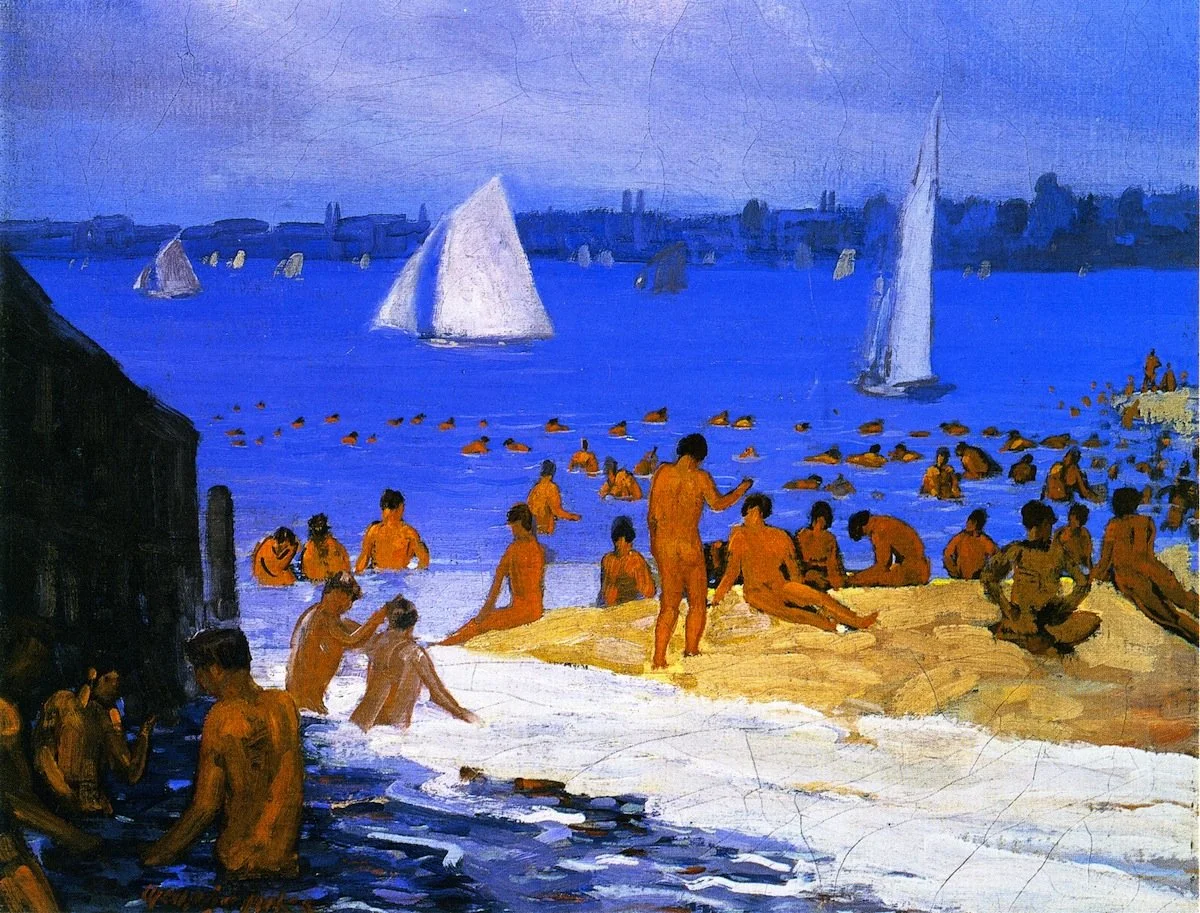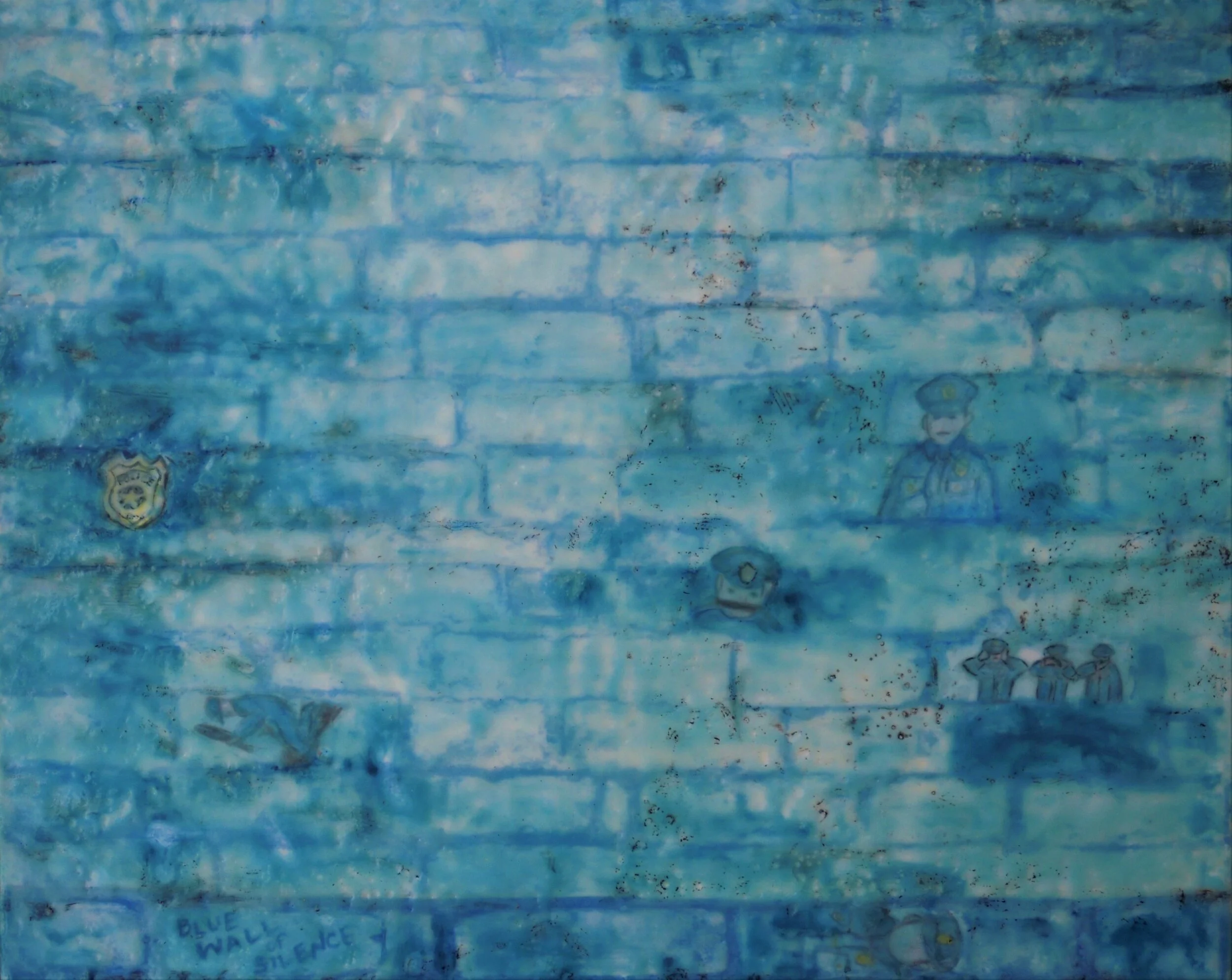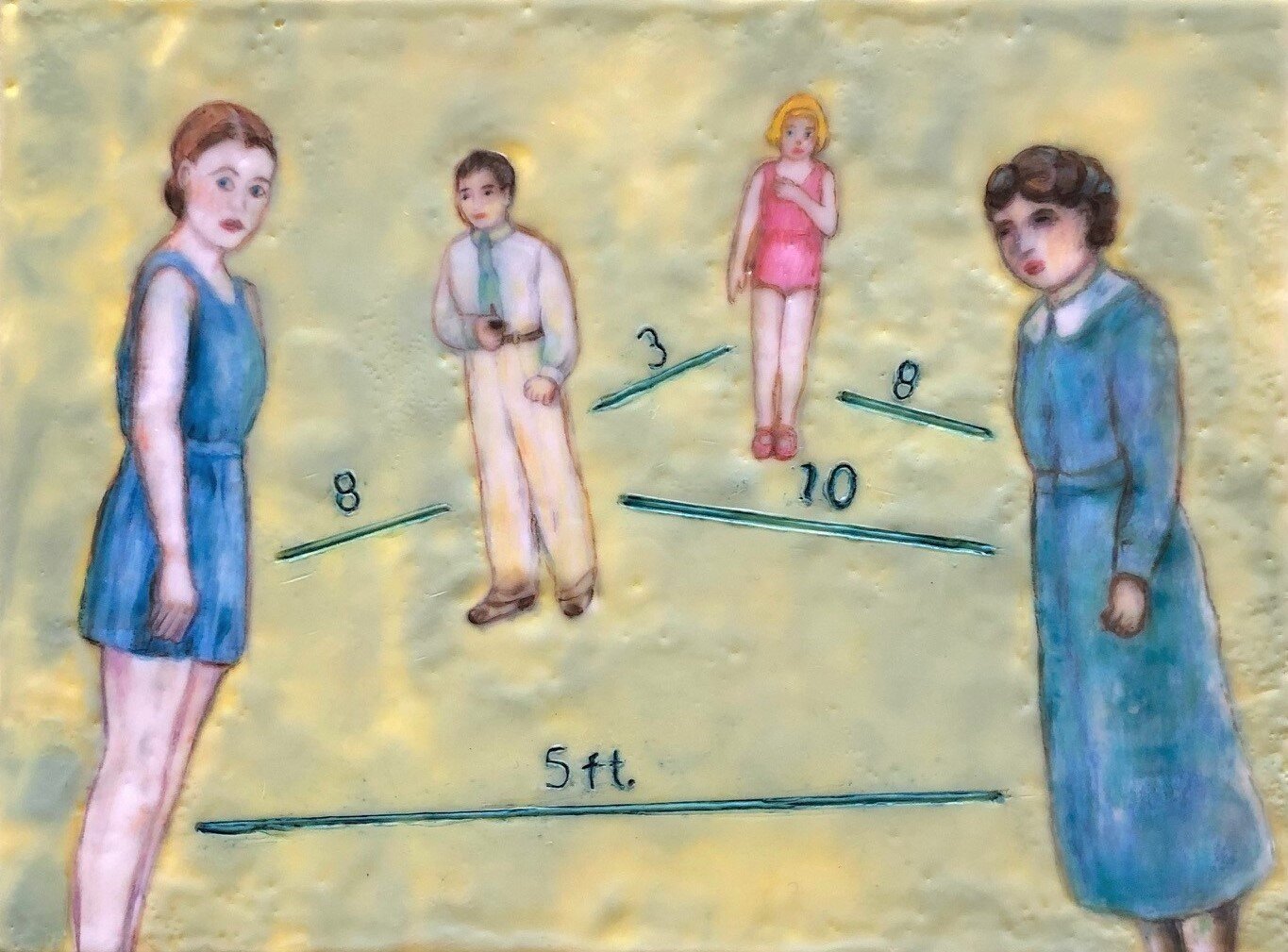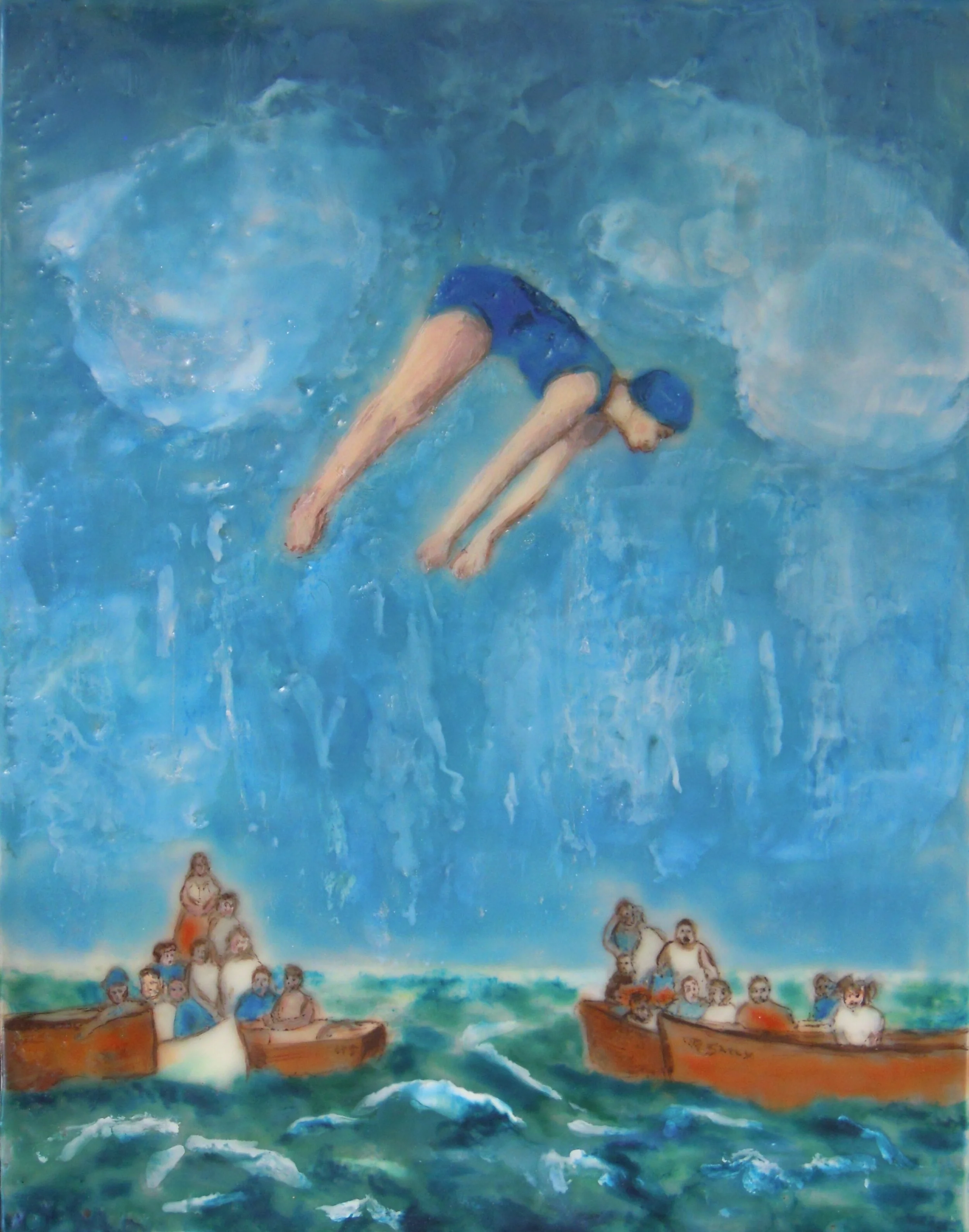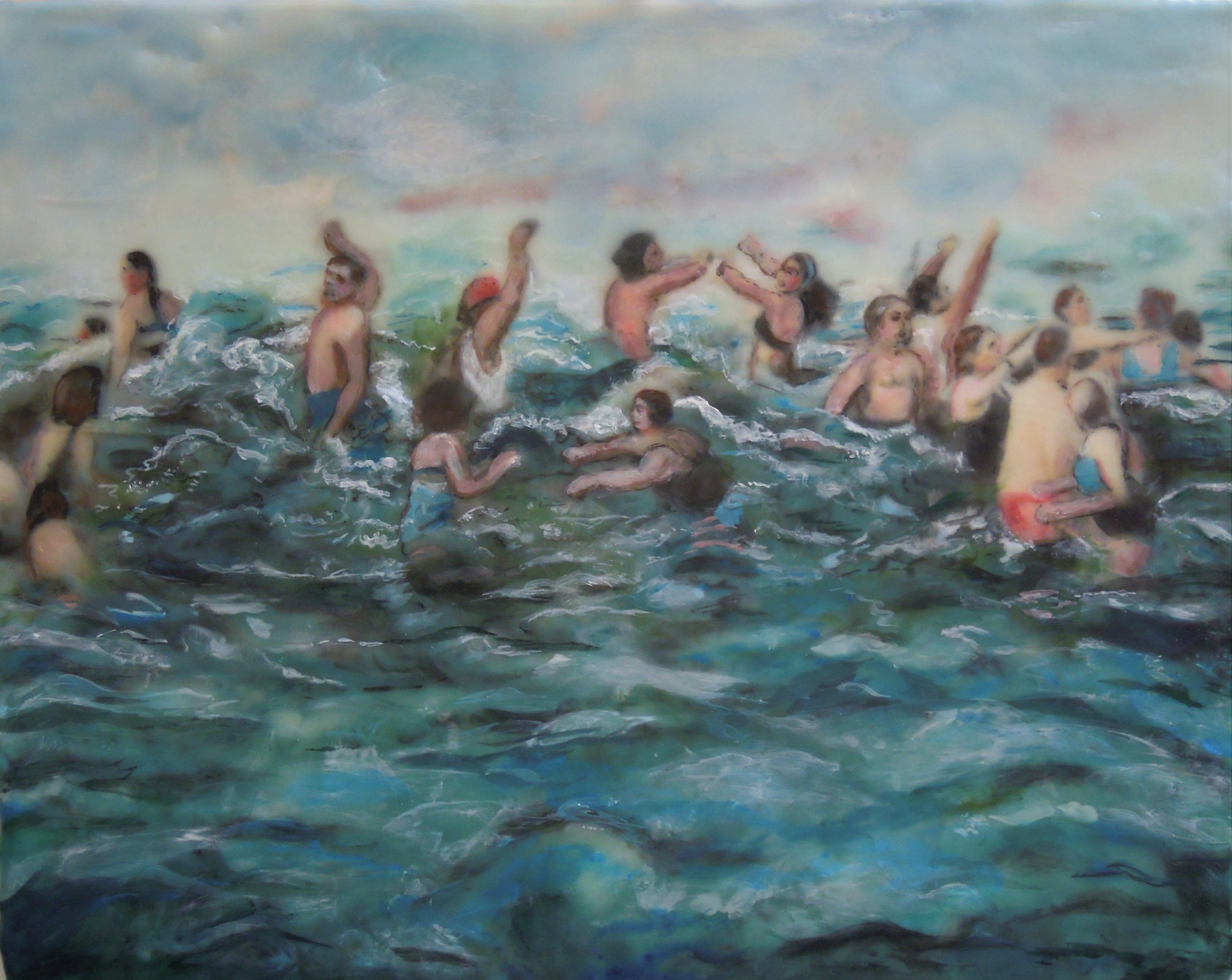
Coming distractions
Above,“Winter Blues” (encaustic), by Providence-based artist Nancy Whitcomb. Below, her “Winter Blues” in oil.
Avian arrogance, in the 119th ‘Little Pictures Show’
“Proud Peacocks’’ (encaustic, collage), by Nancy Whitcomb, in the 119th “Little Pictures Show,’’ at the Providence Art Club @pvdartclub
* The show is on view through Dec. 23.
* Gallery hours are 12-5 p.m, seven days a week.
* The Art Club is at 11 Thomas St., Providence.
* All entries are $350 or less.
* Works can be taken immediately upon purchase.
* New works added daily.
Full details available at https://providenceartclub.org/little-pictures/
Gathering in the Providence Art Club, circa 1890. The club was founded in 1880.
The former Seril Dodge House has been the club's headquarters since 1887.
Blue but happy
“Happy Dance” (encaustic and ink painting), by Nancy Whitcomb, in the “Out of the Blue” group show, at Spring Bull Gallery, Newport, R.I., through Oct. 29
Kevin Gilmore, the show’s juror, says:
“A word on ‘Out of the Blue’. The color blue is the first ‘clue’ in the prompt for this exhibition. Not surprisingly, for a gallery located on Aquidneck Island, surrounded by the beautiful shorelines and waters of Narragansett Bay, the color blue dominated the group of submissions.’'
Spring break: Should we fly or take the boat?
“Worldly Birds” (encaustic, collage), by Nancy Whitcomb
Always knitting, especially in Congress
“NRA Knitting Pattern” (drawing, encaustic and netting), by Nancy Whitcomb, in the Providence Art Club’s “Winter Members Exhibition,’’ through March 3.
Surprise airborne invasion
“Soft Landing” (encaustic collage, ink), in the large group show “Flights of Fancy,’’ at Gallery Twist, Lexington, Mass., through Oct. 16.
William Barnes Wollen’s painting of the Battle of Lexington, which took place on April 19, 1775. With the Battle of Concord the same day, it was the start of the American Revolutionary War (1775-1783)
It’s at the National Museum of the U.S. Army, in Fort Belvoir, Va.
Thoughts on summer as it ebbs (?)
“Summer Dreaming” (encaustic painting), by Nancy Whitcomb
(The trick is to get across the Cape Cod Canal bridges.)
Adapted from Robert Whitcomb’s “Digital Diary,’’ in GoLocal24.com
Like many GoLocal readers, I’ve spent much of my life near beaches. To me, they’ve mostly become places to simply walk on, especially in the off-season, to clear one’s head and maybe spot some interesting wildlife, dead or alive.
Where I lived during much of my youth, in Cohasset, on Massachusetts Bay, there’s a mix of sandy gray beaches and very uncomfortable stony strands (recalling Maine) and summertime water that, at least back then, was sometimes much too cold to comfortably swim in, especially on the hottest days, when the southwest wind blew the warm surface water seaward. I came to think that these beaches were mostly good for clambakes, fireworks and letting our dogs run on them. (No enforced leash laws in our town then.) All too often, bunker oil dumped from ships going into Boston Harbor (see below) would coat the beaches, which were also popular teen drinking places at night.
In West Falmouth, on Buzzards Bay, where our paternal grandparents lived, it was quite different, with the usual sou’wester pushing the 77-degree surface water (already fairly warm because of eddies from the Gulf Stream and the shallowness of the bay) toward the soft beach, which included a private club with a simple gray-shingled building that had to be rebuilt after major hurricanes and a tennis court that had to be frequently swept of the sand that blew in from the sand dunes that bordered it.
It had/has a swimming dock that was a centerpiece of kids’ activities there. (There were also some board games in the clubhouse for rainy days and some mildewed books, heavy on potboilers.) Do they worry about sharks swimming near the beach now? We never did.
I never much enjoyed sitting or lying on beaches, with the sand getting into your hair, eyes, swimming suit, sandwiches and potato salad. And no matter how much you rinsed your feet, the grains would stick in your sneakers and end up on the floor in the car and back home. And then there were the flying rats known as seagulls, which would swoop down and steal your lunch and maybe leave a deposit on your head. And sometimes, layers of biting-insect-luring seaweed would cover the lower beach.
Still, the sound of the waves was soporific and being able to look at a far horizon, with its many sailboats, helped put troubles into perspective. And there’s no doubt that being in the sun felt good (for a while), though at the risk of burns and skin cancer (which I’ve had plenty of). Few people thought about that more than 50 years ago. I remember my parents saying “You sure look healthy!’’ when looking at my red face.
The best part of that beach to me became the porch, where I’d read for hours sitting in a rocking chair and taking swigs of the Orange Crush I bought at the club’s little snack bar. There in the shade and a cooling breeze I’d enjoy the views and sounds of the beach without much of the mess, though on a gusty day sometimes sands would blow in there, too.
Does going to beaches tend to make people more environmentalist? We now occasionally use, for a modest annual fee, a beautiful beach, along a cattle farm and tidal river, in South Dartmouth, Mass. It has no facilities except a couple of Port-a-Johns, which, helpfully, tends to discourage day-long visits.
Most importantly, it’s set up in part as a nature preserve – the threatened Piping Plovers, etc. This role tends to make members talk about conservation a lot as they gaze at the low hills of the Elizabeth Islands across usually hazy Buzzards Bay.
Then there were the French beaches where, when we lived and worked in that nation, we were surprised/titillated by how much Western traditions governing public nudity have changed in some places and how waiters would bring food and drinks to you right onto the beach.
We found the most ominous beaches in Florida, with the poisonous Portuguese Man O’War with their lovely blue balloon sails that you wanted to pop, the certainty that there were indeed sharks off the beach commuting up the Gulf Stream, and the brown, wrinkled and irascible retirees. Worse, though mostly on the Gulf of Mexico side, were the toxic red tides, which polluted the air several blocks inland.
We always had small boats – rowboats, small sailboats, up to 17 feet long, even a canoe. We had an outboard motor or two to stick on sterns when needed, but these could be pesky to get going. The boats were practical possessions since we lived up a hill from a harbor. (The canoe was used on a nearby mill pond.)
Before fiberglass, the boats meant a lot of springtime work sanding and caulking the wooden bottoms before applying anti-fouling copper paint. Then we had to carefully maneuver a trailer to launch the sailboats in June and then reverse the process in late September. As the years rolled by, this got tedious.
The channel from the harbor out to the bay, which at Cohasset was really more the open ocean, was narrow, with ever shifting sandy shoals on one side and mussel beds (where we got our bait) on the other and sometimes was quite laborious to get through by sail.
In mid-summer heat waves you had to voyage out at least a mile, to the vicinity of the famous Minot’s Light, to get the real air-cooling effect. You’d hope that ships hadn’t recently dumped a lot of bunker oil, which could cover miles of water and give off a very noxious smell. Thank God for the EPA!
Then back to the small harbor, which became increasingly crowded with large and small pleasure boats over the years, I suppose because of growing local affluence as this small town became an all-out suburb. No longer were lobster and other commercial fishing boats numerous.
It was soothing to go sailing alone, which, if the breeze were a steady 10 to 20 knots, would put you in a ruminative mood. Sometimes you’d throw out an anchor and fish for mackerel, hoping that you wouldn’t get a dogfish instead.
It was also often fun to have small parties on the boats, except when the wind and social energy flagged and there you were – sometimes trapped for hours – in a small cockpit. Eventually, the claustrophobia might force you to use the outboard to motor in.
I still like to go out on boats once or twice a summer if I have a pretty good idea of when I’ll get back to shore. But with the expense and time involved in owning a boat, I’d just as soon have it someone else’s.
xxx
Paragon Park, in Hull, in 1914
There was a now long-gone amusement park, called Paragon Park, along a rather polluted strand called Nantasket Beach, in Hull, Mass., that we’d be taken to about once a year, often around my birthday. There was a lethal roller-coaster, a fun house with sloppily made monsters and, my favorite, something called “The Rotor.” This giant infernal cylindrical device, into which you’d walk, would spin you around at such velocity that you’d be stuck to the walls. (Sounds like astronaut training.)
Inevitably, a kid would get sick and upchuck the junk food (cotton candy, popcorn and hot dogs, etc., of indeterminate origin). Perhaps for the same reason that I very rarely get seasick, I didn’t suffer this misfortune.
Then there were the games (with prizes “Made in Japan,’’ back when that phrase meant cheap instead of high quality), which usually involved throwing a ball at something as a bored attendant (usually an older teen doing this as a summer job) looked on with a frown or a rictus smile.
Paragon Park was notably garish but, especially when you’re young, “kitsch is everything you really like,’’ in the immortal words of our late musician friend with the wonderful name of Page Farnsworth Grubb, who ended his years in Iowa. Despite what you might think from his name, he was about the least pretentious person you could meet. By the way, if you want pretentious, look at the marketing for “The Preserve,” in Richmond, R.I.
Moisture maniacs
‘‘Adult Swim” (encaustic painting), by Nancy Whitcomb
“L Street Brownies’’ (swimming club in South Boston) (1922), by George Luks (1867-1933). Open-air nudity in 1922?!
Snarls at sunset
“Dog Park at Dusk” (watercolor on cradled board, encaustic), by Nancy Whitcomb, a Providence-based artist and member of New England Wax (newenglandwax.com)
N.E. COVID update: Eli Lilly partners with UnitedHealth; ER visits in early pandemic
Encaustic painting by Nancy Whitcomb
From The New England Council (newenglandcouncil.com)
BOSTON
”Eli Lilly & Company has partnered with UnitedHealth Group to develop promising new treatments for COVID-19. Researchers will study Eli Lilly’s new monoclonal antibody treatment for non-hospitalized patients who have recently contracted COVID-19. Read more here.
“Researchers at Harvard Medical School have published a study on the decline of emergency room visits in the early days of the pandemic. The investigators, working at Massachusetts General Hospital, raised raised concerns that critically ill patients were not seeking care because of fear of COVID-19 infection. Read more here.’’
A very orderly elegance
“Fifties Fashion for All’’ (encaustic painting with paper dress patterns), by Nancy Whitcomb. Fashion now seems focused on face masks.
N.E. virus response: MIT leads smartphone tracking; Sanofi joins vaccine partnership; more
“Contact Tracing” ( encaustic monotype), by Nancy Whitcomb
From The New England Council (newenglandcouncil.com)
BOSTON
As our region and our nation continue to grapple with the Coronavirus Disease (COVID-19) pandemic, The New England Council is using our blog as a platform to highlight some of the incredible work our members have undertaken to respond to the outbreak. Each day, we’ll post a round-up of updates on some of the initiatives underway among Council members throughout the region. We are also sharing these updates via our social media, and encourage our members to share with us any information on their efforts so that we can be sure to include them in these daily round-ups.
You can find all the Council’s information and resources related to the crisis in the special COVID-19 section of our Web site. This includes our COVID-19 Virtual Events Calendar, which provides information on upcoming COVID-19 Congressional town halls and webinars presented by NEC members, as well as our newly-released Federal Agency COVID-19 Guidance for Businesses page.
Here is the April 20 roundup:
Medical Response
MIT Leads Global Efforts for Smartphone Tracking – Around the world, the Massachusetts Institute of Technology (MIT) is supporting and leading efforts to track COVID-19 infections. Using Bluetooth signals emitted from smartphones to conduct “contact tracing” on those with access to phones could eliminate much of the work for state and local governments to identify infected individuals. Read more in The Boston Globe
Sanofi Enters Partnership to Speed Development of Vaccine Prototype – Sanofi has partnered with GlaxoSmithKline (GSK) to work together in developing a vaccine for the coronavirus. The two pharmaceutical companies will combine their existing supply chains and resources to expedite both clinical trials of their vaccine candidate and production should theirs prove effective. BioPharma Dive has more.
Boston University Medical School Students Graduate Early to Aid Local Hospitals – Students from Boston University’s medical school have graduated early to begin their residencies in the midst of the global pandemic. Those newly-minted doctors who choose to remain in Massachusetts will receive automatic 90-day provisional licenses to allow them to begin practicing immediately. Read more in The Boston Business Journal.
Economic/Business Continuity Response
MEMIC Releases Workforce Guidance Hub – The Maine Employers Mutual Insurance Company (MEMIC) has launched a resource center for employees to inform them of proper safety precautions and legal protections offered to them as they navigate working during the pandemic. Additionally, the site offers additional aid to policyholders, including the suspension of non-renewals and adjustments to payment plans. Read more.
UMass Memorial Launches Employee Monitoring Program – To ensure that the hospital can remain open safely, UMass Memorial Medical Center has initiated a new program requiring all staff to log if they are experiencing any symptoms of COVID-19 before starting a shift. The measures aim to protect patients and staff as they work to contain the spread of the virus. The Worcester Business Journal has more.
Verizon Continuing to Expand 5G Network – Despite suspending marketing launches, Verizon is still on-track to launch 5G internet service in 60 cities by the end of the year. The provider will be using state-of-the-art technology to expand and improve access across the country, with cities such as Providence and Chicago already seeing 5G being implemented. Read more from PC Magazine.
Community Response
Assumption College, in Worcester, Establishes $3 Million Financial Aid Fund for Students – As its families and students are affected by the pandemic, Assumption College has established a $3 million fund to help its community offset tuition and room costs. The Assumption Coronavirus Financial Aid Relief Fund provides grants for those affected by the virus through job loss, furloughs, reduced hours, or caring for someone with COVID-19. Read more from The Worcester Business Journal.
Bank of America Gives $100,000 to Nonprofits Serving Homeless Population – Bank of America has provided a grant of $100,000 to Father Bill’s and MainSpring, a nonprofit based in Brockton, MA that operates a shelter for the homeless. The funds will be used to maintain the 60 beds in heated tents for shelter clients. The Enterprise has more.
Stay tuned for more updates each day, and follow us on Twitter for more frequent updates on how Council members are contributing to the response to this global health crisis.
Last surf frolic of the season?
“Surf,’’ encaustic painting by Nancy Whitcomb. Don’t worry: Those pesky great white sharks avoid water less than five feet deep….




